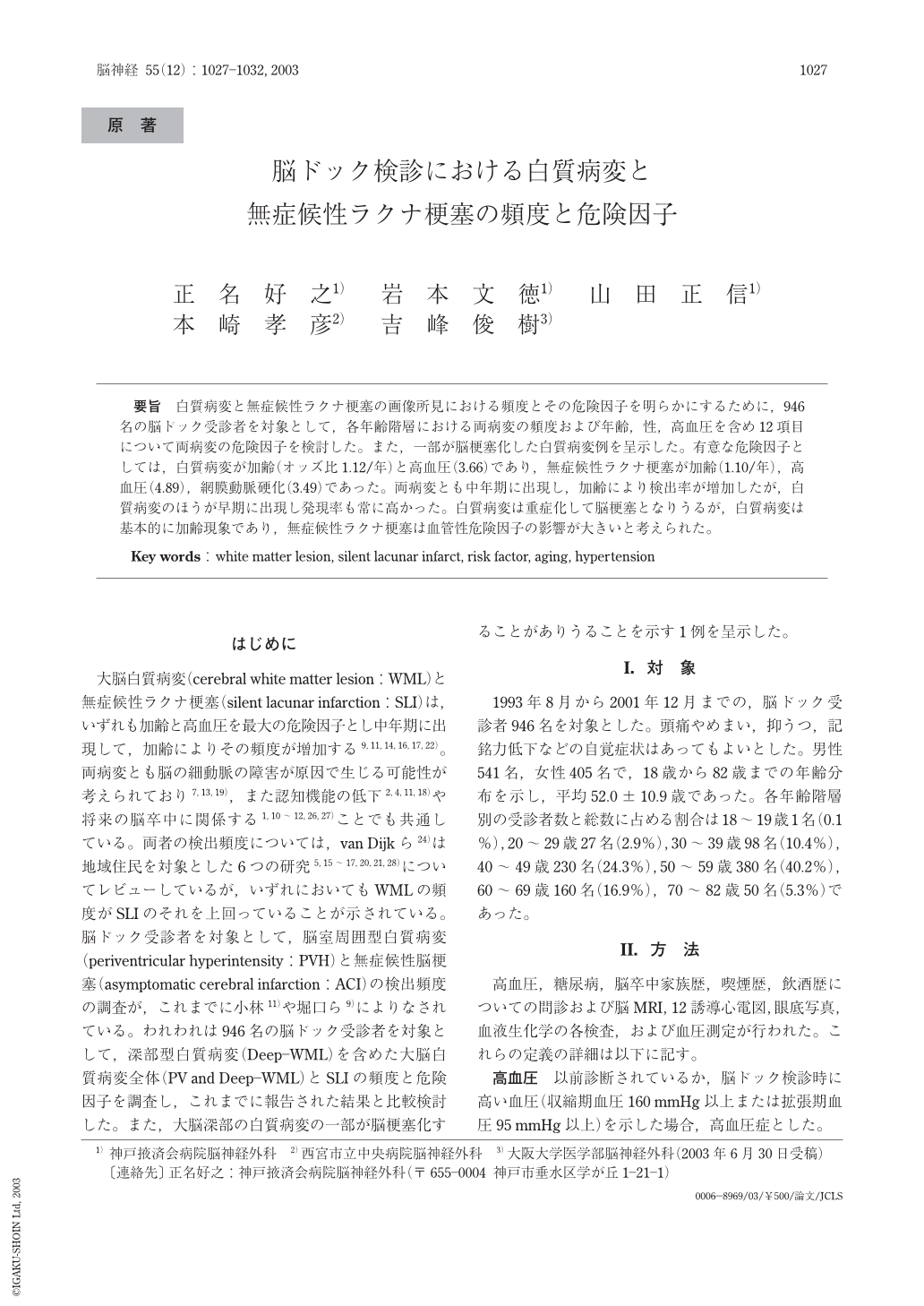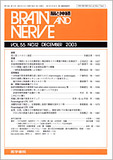Japanese
English
- 有料閲覧
- Abstract 文献概要
- 1ページ目 Look Inside
要旨 白質病変と無症候性ラクナ梗塞の画像所見における頻度とその危険因子を明らかにするために,946名の脳ドック受診者を対象として,各年齢階層における両病変の頻度および年齢,性,高血圧を含め12項目について両病変の危険因子を検討した。また,一部が脳梗塞化した白質病変例を呈示した。有意な危険因子としては,白質病変が加齢(オッズ比1.12/年)と高血圧(3.66)であり,無症候性ラクナ梗塞が加齢(1.10/年),高血圧(4.89),網膜動脈硬化(3.49)であった。両病変とも中年期に出現し,加齢により検出率が増加したが,白質病変のほうが早期に出現し発現率も常に高かった。白質病変は重症化して脳梗塞となりうるが,白質病変は基本的に加齢現象であり,無症候性ラクナ梗塞は血管性危険因子の影響が大きいと考えられた。
Abstract
To clarify difference of significant risk factors and that of prevalence with increasing age between white matter lesion(WML)and silent lacunar infarction(SLI), 946 brain check-up subjects were investigated. Twelve risk factors including age, sex,a nd hypertension were analyzed using multiple logistic regression analysis. A case of WML, which changed into infarction,was presented. Significant(P<0.01)risk factors for WML were aging(odds ratio; 1.12/year)and hypertension(3.66), while those for SLI were aging(1.10/year), hypertension(4.89), and retinal arteriosclerosis(3.46). Both WML and SLI emerged in middle age and thereafter the prevalence rates increased with age, although WML emerged earlier and was more frequent throughout than SLI. The results indicated that WML was essentially aging phenomenon, while SLI was strongly affected by vascular risk factors, although WML might possibly chang into infarction.
(Received : June 30,2003)

Copyright © 2003, Igaku-Shoin Ltd. All rights reserved.


